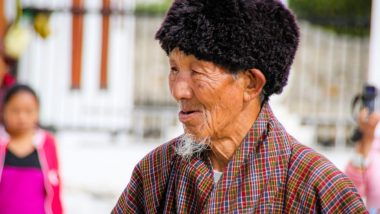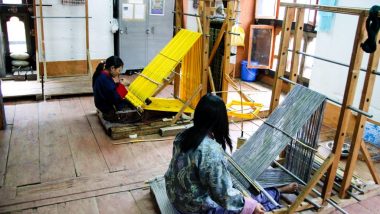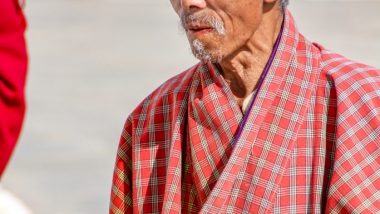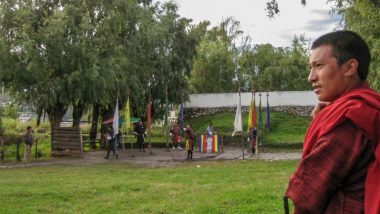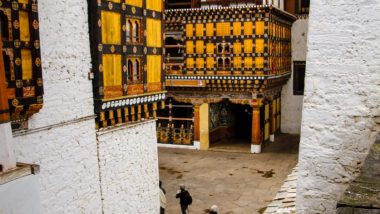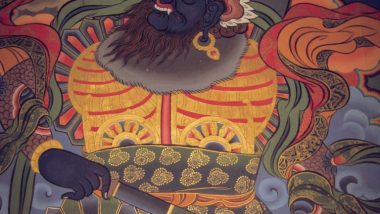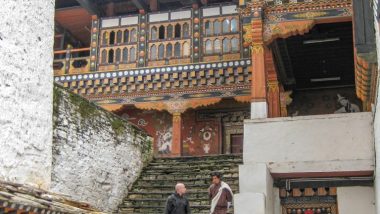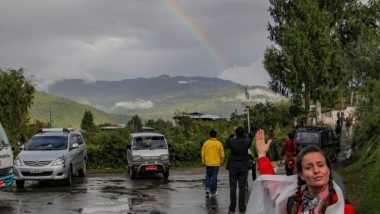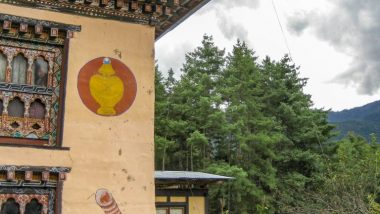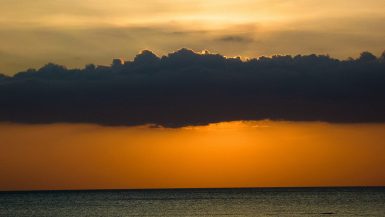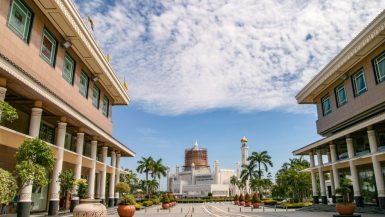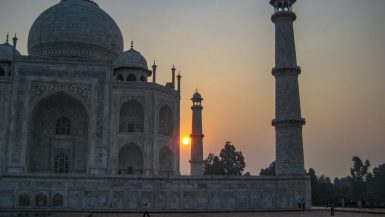Druk Yul
Welcome to Druk Yul or as it is called in the English speaking world, the Land of the Thunder Dragon – Bhutan!
“Bhutan is a tiny kingdom squeezed in between its giant neighbors China and India. The country that was for long isolated from the outside world has in the recent years now started to open up and let visitors get a glimpse of this mysterious land, one of the planets last Shangri La´s.”
This was what we had read, but could a country in the 21st century still be almost untouched by modern influences? We had to go and find out…
Expensive tourism
Bhutan is by no means a cheap place to visit and you can not travel on your own. That means that pretty much all tourists visiting Bhutan must have a prepaid, preplanned and guided package tour or custom designed travel program.
The so called “Minimum daily package” is decided by the Bhutanese government, is non-negotiable and depends on when you go in the season.
During high season the cost is 250$/person and night and in low season the price is 200$/person.
In this price everything you need is included: All meals, accommodation (minimum of 3 star), a licensed Bhutanese tour guide for the length of your stay, all transports and camping equipment if you are going trekking.
Visa cost
Everyone visiting Bhutan are also required to obtain a Visa in advance, except for nationals of India, Bangladesh and the Maldives. The cost of the Visa is around 40$ and you apply for it at the same time as you book your trip through a travel agent.
We read that it was recommended to book the trip and apply for the Visa at least 90 days ahead but we managed to book through our Nepalese EBC-tour operator with just a weeks’ notice.
So, as we are backpackers we decided that a 3 night/4 day package was good enough for us. A small blow to the travel budget, but as it turned out, well worth it.
Two airlines fly to Bhutan
Druk Air and Bhutan Airlines are the only airlines that makes international flights to Bhutan and the International Airport in Bhutan is at Paro. Even if the inflight might not be quite as intense as it is in Lukla, it is still pretty spectacular here as well.
A new kind of airport experience
 Maybe it was just a feeling built up by expectations of Bhutan being the long lost kingdom. But it really felt special walking out on the airport tarmac getting the first view of the arrivals building.
Maybe it was just a feeling built up by expectations of Bhutan being the long lost kingdom. But it really felt special walking out on the airport tarmac getting the first view of the arrivals building.
It was nothing like the airport buildings we had seen before.
It had a big mural of the royal family in the front and architecture in the same style and décor as seen in the countries many temples, monasteries and dzongs (fortresses).
Fast immigration process
 The airport is really small so the immigration process went fast and smooth and suddenly we were standing outside the terminal building, welcome to Bhutan!
The airport is really small so the immigration process went fast and smooth and suddenly we were standing outside the terminal building, welcome to Bhutan!
Two men dressed in the traditional Gho were standing in front of a red SUV holding a sign with our names.
They greeted us very politely and introduced themselves as Jigme and Khile (I hope I got the names right), they were our guide and driver for the coming days.
Bhutanese dresscode
 The Gho is the national dress for men and it looks a bit like the Scottish kilt. It is a knee length robe that is secured with a belt, called a Kera.
The Gho is the national dress for men and it looks a bit like the Scottish kilt. It is a knee length robe that is secured with a belt, called a Kera.
The women wear a long dress called a Kira, an ankle length garment worn together with a jacket called Tego.
Once it was mandatory to wear these dresses but nowadays the dress code is more relaxed, even though the uniform is still mandatory in government offices, schools, monasteries and during formal gatherings.
Most of the people we met wore the traditional clothing, and it is understandable as they look both beautiful and comfortable.
As I am pretty far from being a fashionista so I will leave the introduction of Bhutanese clothing at this.
Butanese food
 When we had been picked up from the airport we stopped for lunch in a nearby restaurant.
When we had been picked up from the airport we stopped for lunch in a nearby restaurant.
We were served typical Bhutanese dishes containing potatoes, rice, vegetables and a plate with meat and chilies.
The food was delicious, much tastier than it looked at first sight.
Much of the Bhutanese cuisine have influences and similarities of the neighboring countries India, Nepal and Tibet.
Paro Dzong
 After the lunch break we went to see the Paro Dzong, a big Buddhist monastery and fortress overlooking the beautiful Paro valley.
After the lunch break we went to see the Paro Dzong, a big Buddhist monastery and fortress overlooking the beautiful Paro valley.
Besides from being a monastery/fortress it also houses the National Museum and district government offices and some of its chapels are open for tourists to visit.
As we are no architecture junkies the dzong itself did not excite us too much, even though it was a very beautiful building. The most memorable thing from our visit was instead all the friendly and smiling faces we got from the monks living there.
One interesting fact about the dzongs is that they were built without any nails, iron bars or any blueprints. Pretty impressive considering the architecture. The construction directions where instead given by a high lama who used spiritual inspiration as guidance. (Sounds a bit unsafe but the divine force is obviously as strong as any building standard.)
The even more famous Punakha Dzong
For those who are interested in architecture and historic buildings it is probably worth visiting the even more magnificent Punakha Dzong which is one of the most famous sights in Bhutan.
For us it was a bit too far away and we had other higher priorities with our short stay.
The Punakha Dzong was the central location of the Bhutanese Government until the mid-1950s but stills plays an important role as it serves as the winter residence for the central monk body and it has been the venue for coronation of all the kings of Bhutan.
The last wedding was held in October 2011 when the 5th king of Bhutan, Jigme Khesar Namgyel Wangchuck, married Jetsun Pema making her the queen or “Druk Gyaltsuen – Dragon queen”. The king is accordingly called the “Dragon King or Druk Gyalpo”.
Archery – the national sport
 After the monastery we stopped at a archery field where there was some kind of competition going on.
After the monastery we stopped at a archery field where there was some kind of competition going on.
A group of gentlemen of different ages, equipped with both older bamboo bows and modern composite fiber-glass ones stood in the end of a narrow field that was around 140 meters (460 ft) in length.
How they managed to hit anything from that distance is a mystery, but they did.
And by the looks of it, this was more like a relaxed and fun gathering than a serious game.
There were a lot of laughter and what seemed to be taunting as soon as someone misplaced a shot or was getting ready to shoot. (My body language skills are better than my Bhutanese.)
If you are interested in knowing more about the rules of the game you can do so here.
Next stop Thimpu
 We spent the night in Paro and the following morning we got picked up again and headed towards the capital, Thimphu.
We spent the night in Paro and the following morning we got picked up again and headed towards the capital, Thimphu.
Along the way we enjoyed the scenery with valleys, rivers and people passing by, living their everyday lives. I love these kinds of journeys.
In Thimphu we visited the National Memorial Chorten and the Changangkha Temple that had nice views and a beautiful row of prayer wheels.
I am not sure if the Bhutanese also use the Om Mani Padme Hum mantra while spinning the wheels but we got some Nepalese flashbacks while walking around here. For those of you who have not heard the relaxing chant, here it is.
A quiet capital
By now we were culturally exhausted and it was nice to get to our hotel in the city center of Thimphu.
Even though Thimphu is the capital it was surprisingly quiet. No Asian big city rush there.
The hotel dinner was great, so were the beds, and it did not take long before Mr. Sandman came by and knocked us out.
The Tiger´s Nest
Day three. Today it was finally time to visit Taktshang – The Tiger´s Nest! Perched on the side of a cliff 900 m (3000 ft) above the Paro valley you will find this stunning monastery, unarguably the most iconic spot in Bhutan.
The hike itself is not a very long one, only about 4,2 km (2,6 miles). But it is quite steep as the starting elevation is at about 2600 m (8530 ft).
The Tiger´s Nest sits at 3120 m (10240 ft), so the difficulty rating would be about moderate if you are anyone of average fitness.
Flying on a tiger
The Taktshang is the birthplace of Bhutanese Buddhism.
The story goes that in the 8th century Guru Rinpoche, also known as the “Second Buddha”, flew here on the back of a tigress. He then meditated in a cave for three years, three months, three weeks, three days and three hours.
Thus the name Tiger´s Nest.
Beatiful hike
On average the round trip to the Tigers Nest takes about 4-5 hours.
And if you are lazy, or just think it might be too strenuous, there is the possibility to rent a horse. (If you do not have a flying tiger that is.)
To be completely honest, some people would need the exercise instead of sitting on the back of a poor pony.
 We walked, and it what a walk it was. The trail immediately starts with a steady climb and continues doing so most of the way to the top.
We walked, and it what a walk it was. The trail immediately starts with a steady climb and continues doing so most of the way to the top.
We passed tons of prayer flags and the views of the valley kept getting better and better the higher we got.
The path is surrounded by pine and cypress trees covered in a green moss.
Jigme thought that my non-existent haircut could need some extra volume and helped me get a proper Trump-wig.
Up and down and up again
About half-way up there is a restaurant with nice views of the Tiger´s Nest.
We chose not to stop and kept on going for about 50 minutes or so before reaching the viewpoint overlooking the monastery.
This is a popular place for taking photos, with unobstructed views of the monastery in the background and tons of prayer flags swaying in the wind. So click click click before you gather strength for the final push.
From here the trail turns into stairs, first descending down to a bridge beside a waterfall and then they go up again, which will strengthen you morale.
All in all there should be about 800 steps to be walked until you reach the entrance of the monastery.
No photos inside
As photography is not allowed inside there are police or security guards that will take care of your technical belongings during your stay. This is done due to the fear of photos making the site too commercial.
I have no opinion about that, but as my long term memory is completely messed up I have no recollection of how the place looked at all which is a bit of a shame.
But it does not matter, as we like views more than architecture. The views from outside the Tiger´s Nest was absolutely breathtaking and that memory is well documented indeed.
Fast descent
After spending about half an hour at the monastery we started heading back again.
My other half felt restless and practiced some downhill running.
Maybe not recommended to everyone as exhaustion combined with slippery tracks and loose gravel makes it easy to fall while descending, even though she made it down in one piece.
We took a brake further down the trail and watched people passing by.
Fariba had a “English-Bhutanese”-conversation with a women carrying her little granddaughter on the back. The obvious linguistic barriers were overcome by international body language, it always works.
A while later we were back on our feet and walked the last part of the trek down to the parking lot.
Is this real?
 Many times when visiting tourist destinations we can not help to wonder if this specific place is genuine or just a product of tourism.
Many times when visiting tourist destinations we can not help to wonder if this specific place is genuine or just a product of tourism.
Cultural tourism for example sounds pretty positive. But is not always a good thing.
Because it effects the local population in so many ways that most people do not think of. both economically, culturally, socially and environmentally.
Travel destinations are in many places worn down by the pressure of tourism as money rules, and the effects on the local population is far from being only positive. Their “natural” home turns into holiday resorts and the money that was supposed to stay in the local community ends up leaving the country.
The first positive feeling towards tourists might soon be changed into something completely different. We have seen this negative impact in a lot of overcrowded places around the world.
Strict tourism policy
This is something that the Bhutanese seem to have thought about thoroughly by implementing their strict tourism policy.
By regulating tourism they are able to preserve Bhutan’s natural and culture assets and minimizing the negative impacts of tourism whilst maximizing the economic benefits.
This seems to have worked, at least for now. Because the feeling that we had during our visit was that we were visiting Bhutan on their terms, not our own.
 This only strengthened the sense of Bhutan being one of the last untouched places on earth. It is probably a good idea to visit the country sooner rather than later as the modern world keeps coming closer and closer, and that is not always a good thing.
This only strengthened the sense of Bhutan being one of the last untouched places on earth. It is probably a good idea to visit the country sooner rather than later as the modern world keeps coming closer and closer, and that is not always a good thing.
GNH
When you say “Hello” in Bhutanese you say “Kuzo Zangpo”.
The local currency Ngultrum is paired or pegged to the Indian rupee so the later is also accepted as payment in Bhutan.
Bhutan measures prosperity by its citizens happiness levels, they call it GNH, Gross National Happiness.
No smoking in public
The sale and production of tobacco in Bhutan is banned. Smoking is also prohibited in public places, though allowed privately.
Bhutan was the last country in the world that got television, in 1999. The internet came shortly after that, nowadays the world wide web is getting as common here as in any place.
The name “Land of the Thunder Dragon” comes from the violent storms that often comes in from the Himalayas.
Bows, fairytale animals and giant penises
 The national sport since 1971 is as already mentioned archery, or Dha.
The national sport since 1971 is as already mentioned archery, or Dha.
The national animal is a muscular and a bit odd looking mammal called the Takin. They actually look a bit like the offspring of a goat and a bear, hmm.
Unexpectedly – Phallus symbols or penises are somewhat of a common sight in Bhutan. You will see them “standing proud” in the most unexpected places.
They are on signs, in souvenir stands, as fountains, on doors, windows and walls. Penises, penises, penises, everywhere penises…
But what do they mean?
To make a long story short; the Buddhist Master Drukpa Kunley, aka ”the Divine Madman”, aka “the Saint of 5 000 women” arrived in Bhutan from Tibet in the 15th century.

He had a bit of an unconventional way of teaching Buddhism to the masses and used a mix of sarcasm, sex and other shocking methods to attract followers.
When he was not occupied with wine and women he also used his “Flaming thunderbolt of wisdom” to strike down on evil demons.
Apparently he was very successful, because nowadays he is considered to be the most popular saint of Bhutan.
Many Bhutanese still believe that the phallus symbol will help bring fertility and prosperity and keep evil away.
So, was the cost worth the trip?
Absolutely yes! We had a wonderful time and it was definitely one of the most special countries we have ever travelled to, it will truly be a memory for life.
Next time we will bring the kids, as we believe that Bhutan has to be seen in the near future, before it changes too much.




